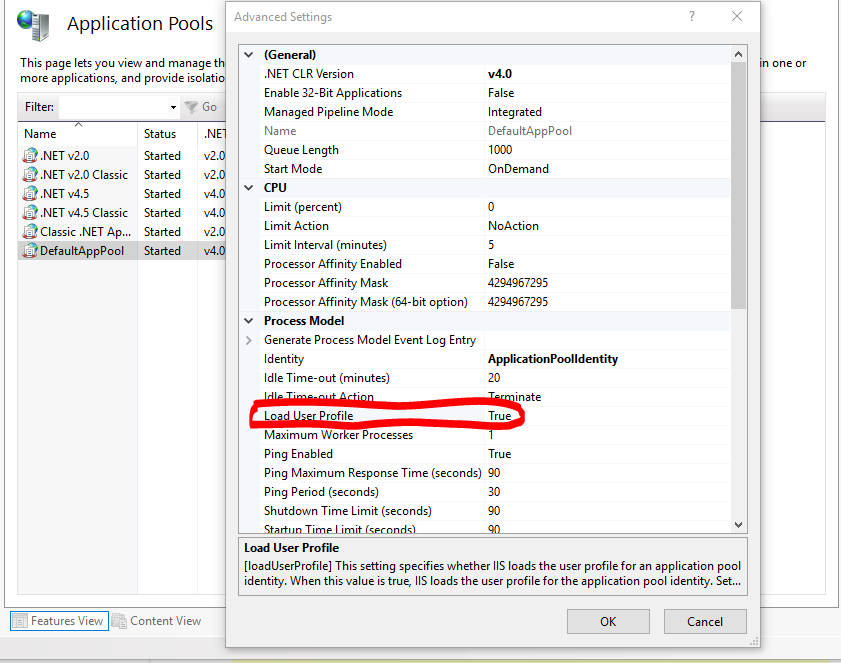I found a solution. I'm not exactly sure if all steps are necessary to it work, but now my app works perfectly:
1.- Update your web.config to support securityTokenHandlers
<section name="system.identityModel" type="System.IdentityModel.Configuration.SystemIdentityModelSection, System.IdentityModel, Version=4.0.0.0, Culture=neutral, PublicKeyToken=B77A5C561934E089"/>
<section name="system.identityModel.services" type="System.IdentityModel.Services.Configuration.SystemIdentityModelServicesSection, System.IdentityModel.Services, Version=4.0.0.0, Culture=neutral, PublicKeyToken=B77A5C561934E089"/>
in the configSections node. And
<securityTokenHandlers>
<remove type="System.IdentityModel.Tokens.SessionSecurityTokenHandler,
System.IdentityModel, Version=4.0.0.0, Culture=neutral,
PublicKeyToken=B77A5C561934E089" />
<add
type="System.IdentityModel.Services.Tokens.MachineKeySessionSecurityTokenHandler,
System.IdentityModel.Services, Version=4.0.0.0, Culture=neutral,
PublicKeyToken=B77A5C561934E089">
<sessionTokenRequirement lifetime="00:30:00"></sessionTokenRequirement>
</add>
</securityTokenHandlers>
</identityConfiguration>
as a regular node.
2.- In your Startup.Auth.cs file, update your ConfigureAuth(IAppBuilder app) like this:
public void ConfigureAuth(IAppBuilder app)
{
UserManagerFactory = () =>
{
var userManager = new UserManager<SIAgroUser>(new UserStore<UserType>(new SIAgroUserDbContext()));
IDataProtectionProvider provider = app.GetDataProtectionProvider();
//userManager.UserTokenProvider = new Microsoft.AspNet.Identity.Owin.DataProtectorTokenProvider<UserType>(provider.Create("PasswordReset") );
if (provider != null)
{
userManager.UserTokenProvider = new DataProtectorTokenProvider<UsertType, string>(provider.Create("PasswordReset"));
}
return userManager;
};
OAuthOptions = new OAuthAuthorizationServerOptions
{
TokenEndpointPath = new PathString("/Token"),
Provider = new ApplicationOAuthProvider(PublicClientId, UserManagerFactory),
AuthorizeEndpointPath = new PathString("/api/Account/ExternalLogin"),
AccessTokenExpireTimeSpan = TimeSpan.FromDays(14),
AllowInsecureHttp = true
};
// Enable the application to use a cookie to store information for the signed in user
// and to use a cookie to temporarily store information about a user logging in with a third party login provider
app.UseCookieAuthentication(new CookieAuthenticationOptions());
app.UseExternalSignInCookie(DefaultAuthenticationTypes.ExternalCookie);
// Enable the application to use bearer tokens to authenticate users
app.UseOAuthBearerTokens(OAuthOptions);
// Uncomment the following lines to enable logging in with third party login providers
//app.UseMicrosoftAccountAuthentication(
// clientId: "",
// clientSecret: "");
//app.UseTwitterAuthentication(
// consumerKey: "",
// consumerSecret: "");
//app.UseFacebookAuthentication(
// appId: "",
// appSecret: "");
//app.UseGoogleAuthentication();
}
3.- Clean up the constructor of your Startup class like this:
static Startup()
{
PublicClientId = "self";
}
That worked for me :) I hope it works for you too

